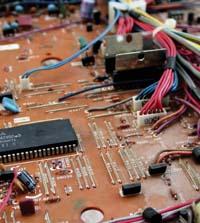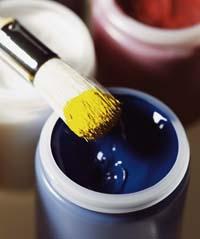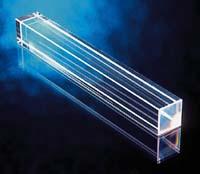Heavy metal dependent technology

In today's society there are eleven tools and tools made of metal or metal. Anyway, it is a very old question. In fact, three distant periods of human history are also characterized by the metals used in those times: the Copper Age, the Bronze Age and the Iron Age. The extraction of iron meant a revolution in the metal industry in the Bronze Age, since the strongest metal known until then was harder than -- bronze.
Bronze is only an improved copper, a 90% copper alloy, harder than copper itself, easier to melt and more adaptable. Like the use of copper, it was a great step forward with regard to the use of stone and wood, bronze was also a great advance with respect to copper. Until iron was imposed, bronze was the most useful metal that man knew.
Today we have a great dependence on copper, which is the one used in all electrical and electronic devices. Its applications are the manufacture of tubes, kitchen utensils and various alloys. However, 45% of the copper currently used is used in electrical components. Its properties are very good. It is easy to make copper threads, is a good driver, tough and corrosion resistant. That is why it is very abundant. For example, a computer has about two kilos of copper and a car has at least 20 kilos.
All this is just an example. In fact, the best-known heavy metals, mercury, cadmium and lead, have many applications. For example, one of the most peculiar features of mercury is its ease of creating amalgams with different metals. Mercury forms potent amalgams such as gold, silver, zinc, lead and tin, which have various uses. For example, the holes of the teeth and teeth eaten by the cavities are covered with an amalgam. Moreover, mercury has other uses, perhaps one of the best known is the thermometer.

Cadmium and its compounds are used in pigments, stabilizers, coatings, special alloys, electronic compounds, etc. But the most important use today is that of batteries and batteries of nickel cadmium. For this purpose, more than 80% of cadmium is used.
Lead and its compounds are mainly used in automotive and industrial batteries.
Precious metals above the heavy ones
Very close to mercury, cadmium and lead, at least in the periodic table, are found gold, silver and platinum. They are also heavy metals, although they are better known in social perception for their applications as precious metals. In fact, they are very used in jewelry.
However, they have eleven other applications. Silver, for example, is a very good driver, but it is expensive. On the other hand, because of its great sensitivity to light, it is used in photography as a silver and iodide bromide (or we should say it was used because of the revolution of digital photography). Gold is a good reflector to radiate infrared light. For this reason, in the crystals of the skyscrapers, a fine gold foil could be placed to reduce the interior heat that can cause sunlight.

Platinum is used in the manufacture of crucible and containers, especially in jewelry. It is also a common catalyst in chemical reactions. Palladium is also frequently used as a catalyst for chemical reactions. Likewise, being cheaper than silver, it is often used as a substitute for silver, both in jewelry and when dentists establish bridges.
In addition to platinum and palladium, two compounds that titanium forms with chlorine are used as catalysts in many chemical reactions. However, the most common compound of titanium is the white pigment of titanium dioxide (TiO 2). It perfectly covers surfaces and is used in paints, rubbers, papers, etc.
Titanium is used to manufacture equipment for the chemical industry. It will also be alloyed with iron, vanadium, aluminum, molybdenum and other metals to obtain resistant and lightweight material used in the aeronautical and aerospace industry, such as reactors, missiles, etc. The structure of the Guggenheim Museum Bilbao, for example, consists of an alloy between titanium and zinc (higher proportion of titanium). The foil is thin (one-third of the millimeter is thick) and manageable. Therefore, it adapts perfectly to the shape of the construction. In addition, it oxidizes very slowly.
Essential component of steel
In construction the use of steel is more common. In the case of steel, metals such as titanium, vanadium or molybdenum are added, always in very small quantities. Approximately 80% of the vanadium produced is used as a ferrobanadium or as a steel additive to increase the resistance of steels. These mixtures or alloys are sufficient to obtain better quality steel, since it considerably increases the strength or solidity of the steel. This allows to create lighter structures without losing resistance. This type of steel is used in construction and automotive, for example. These alloys allow to employ increasingly narrow beams in construction and steel plates of lower weight in automotive.

The addition of niobium to steel is also quite common. Niobium is used to improve the mechanical properties of steel, being sufficient an increase of 0.03-0.04% to double its resistance.
Stainless steel is manufactured with chromium, among others. In fact, in stainless steel the concentration of chromium is equal to or greater than 12%, although the antioxidant characteristics of chromium are noticed even when the concentration of chromium is 5%. Chromium is mainly used in metallurgy, in order to obtain corrosion resistance and give an excellent finish to the parts. However, chromes and chromium oxides are also used in dyes and paints. Chemical reactive potassium dichromato (K 2 Cr 2 O 7) is used to clean the laboratory glass material. Other compounds are used as catalysts.

Some selenium compounds are also appropriate catalysts. They are mainly used in xerography and photocopiers. In electrical and electronic applications, such as solar cells and rectifiers, photography, veterinary medicine or anti-dandruff shampoos, selenium compounds can also be found.
The use of heavy metals does not cease, so researchers are investigating new applications for them. For example, three or four years ago a group of researchers from the UK and the US discovered new uses for Indian nitride. They found that the Indian nitride could accumulate a negative charge on its surface, something unusual in semiconductors like this. Until then only another case was known with this property, that of the Indian arseniuro.
In most semiconductors there is an area with few electrons around the surface, which means a great resistance when forming alloys with metals. However, this problem could be avoided if semiconductors enriched with electrons are produced on the surface.
This can greatly facilitate the manufacture of hybrid materials with metal-semiconductor alloys, which can be of great use in the field of optoelectronics. In the future it is intended to investigate the electronic properties of Indian nitride and its alloys.
All these applications and uses are just a few examples. However, it is sufficient to warn that technology depends on heavy metals. Can you imagine a world without them?







